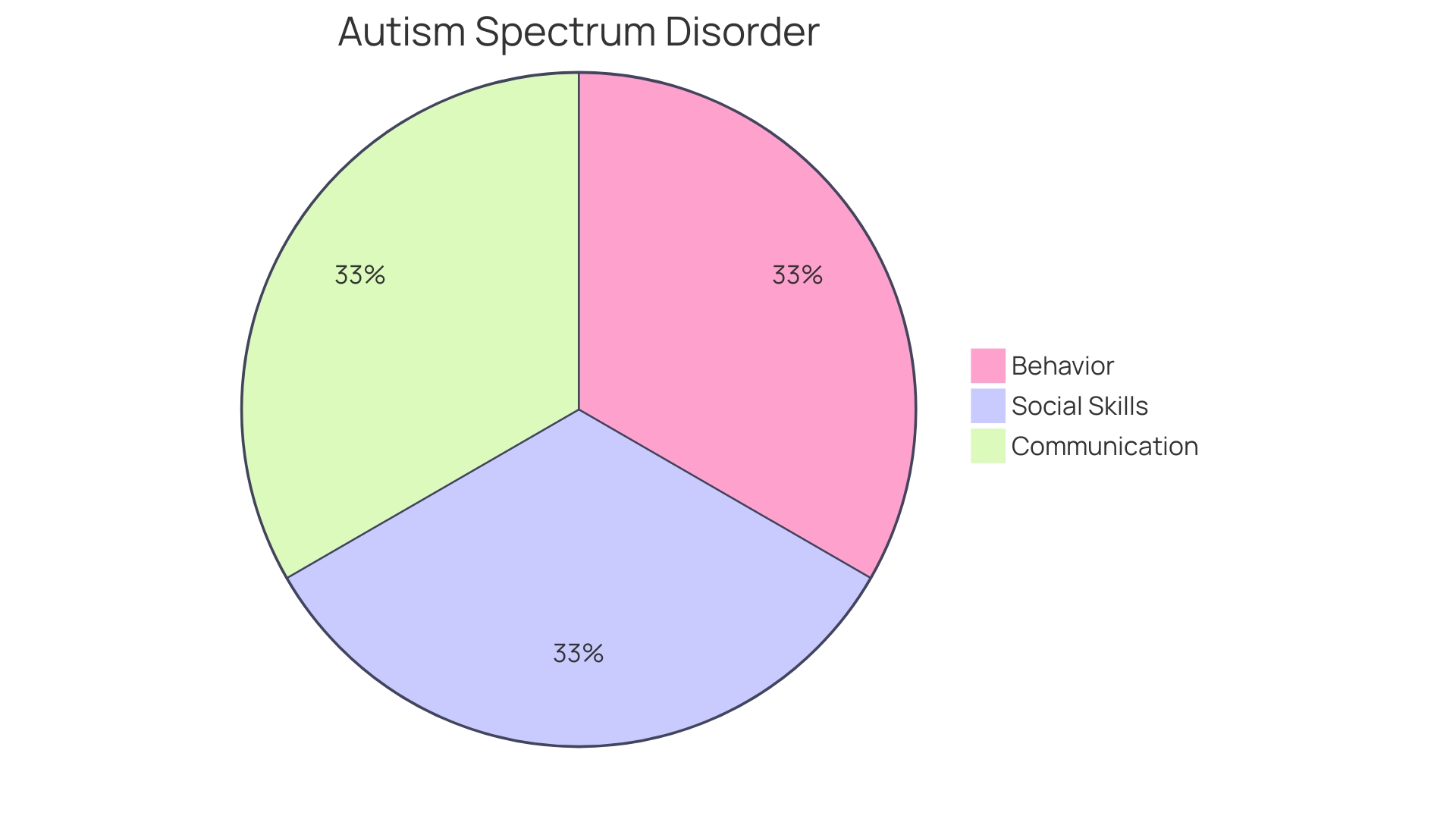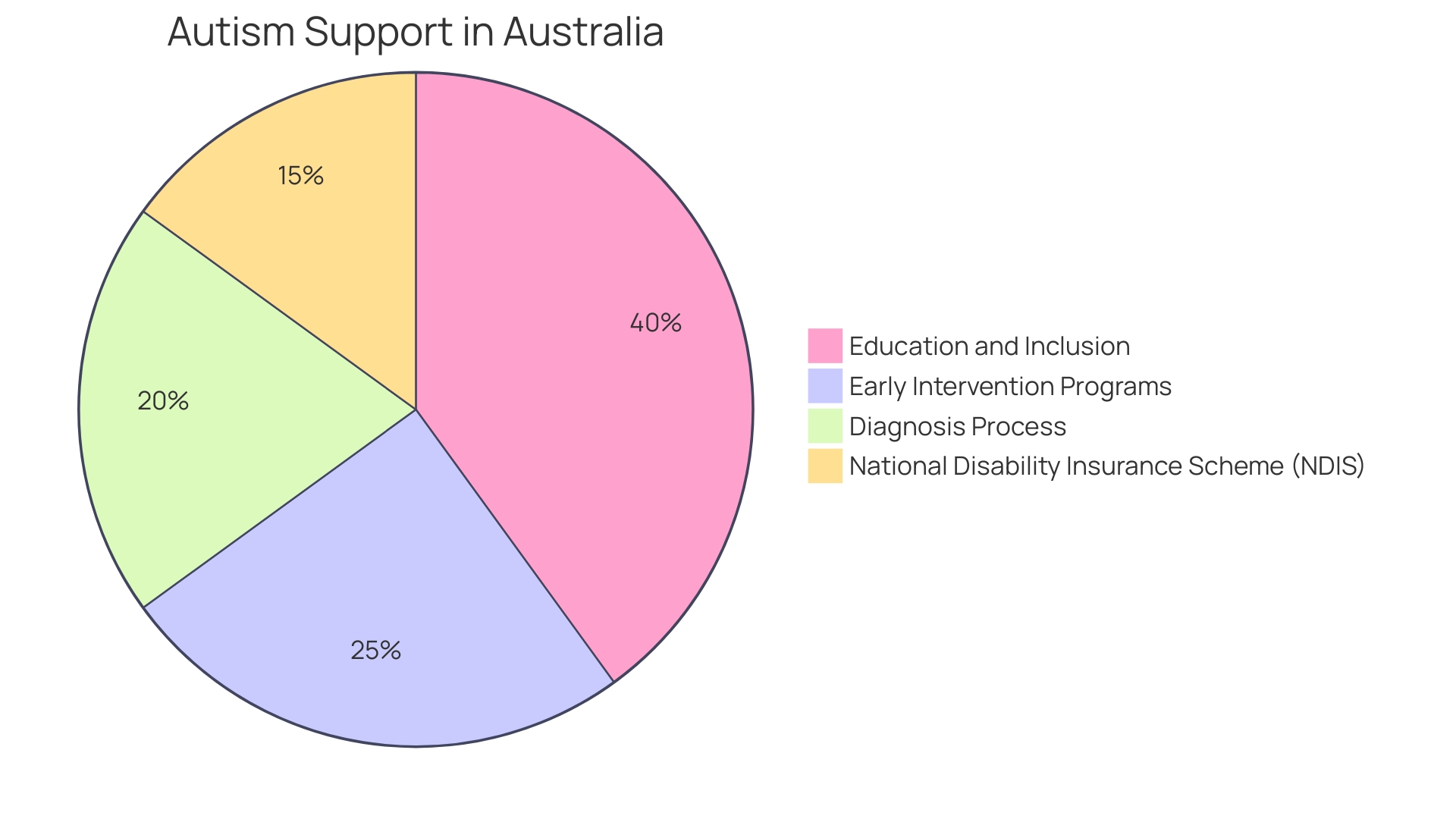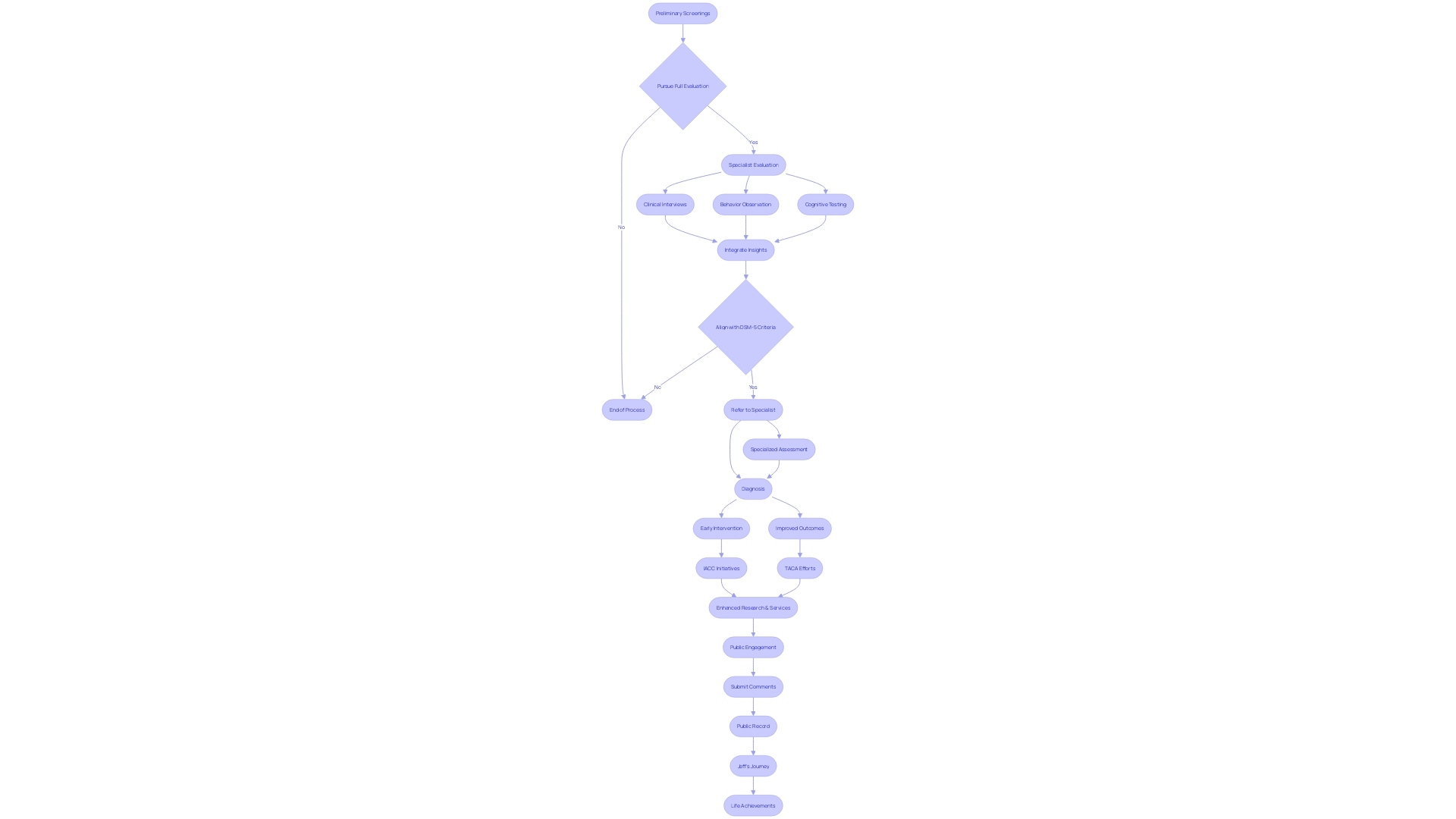Introduction
Grasping the intricacies of autism testing necessitates an understanding of the Diagnostic and Statistical Manual of Mental Disorders (DSM-5) criteria for ASD. These criteria are the linchpin for diagnosis, delineating the specific behaviors and characteristics evaluated by professionals. Autism, a spectrum condition, manifests through persistent differences in communication, social interaction, and behavior across various contexts.
Symptoms might include repetitive behaviors, intense interests, or unusual responses to sensory inputs. Unlike other medical conditions, an official diagnosis of autism isn't a prerequisite for self-identification among the autistic and neurodivergent community. Many individuals find the formal testing process to be inconclusive and elect not to pursue it if it doesn't impact their access to necessary support.
Moreover, it's important to recognize that no single cause for autism has been identified; it's widely believed to stem from variations in brain structure and function. This understanding is critical as it steers clear of debunked theories linking autism to vaccines or parenting styles. In the context of support, early diagnosis is pivotal, with estimates suggesting that as many as 1 in 36 individuals may be on the autism spectrum.
Early intervention can significantly influence the quality of life, offering individuals the support and resources to thrive. Thus, understanding DSM-5 criteria not only informs the diagnostic process but also underscores the importance of timely and accurate identification of ASD.
Understanding the DSM-5 Criteria for Autism
Grasping the intricacies of autism testing necessitates an understanding of the Diagnostic and Statistical Manual of Mental Disorders (DSM-5) criteria for ASD. These criteria are the linchpin for diagnosis, delineating the specific behaviors and characteristics evaluated by professionals. Autism, a spectrum condition, manifests through persistent differences in communication, social interaction, and behavior across various contexts.
Symptoms might include repetitive behaviors, intense interests, or unusual responses to sensory inputs. Unlike other medical conditions, an official diagnosis of autism isn't a prerequisite for self-identification among the autistic and neurodivergent community. Many individuals find the formal testing process to be inconclusive and elect not to pursue it if it doesn't impact their access to necessary support.
Moreover, it's important to recognize that no single cause for autism has been identified; it's widely believed to stem from variations in brain structure and function. This understanding is critical as it steers clear of debunked theories linking autism to vaccines or parenting styles. In the context of support, early diagnosis is pivotal, with estimates suggesting that as many as 1 in 36 individuals may be on the autism spectrum.
Early intervention can significantly influence the quality of life, offering individuals the support and resources to thrive. Thus, understanding DSM-5 criteria not only informs the diagnostic process but also underscores the importance of timely and accurate identification of ASD.

Recognizing Early Signs of Autism
Keeping an eye on developmental milestones is essential for the early detection of autism spectrum disorder (ASD). A child's journey through various growth stages, such as social communication, interaction, and behavior, may signal the need for a closer look if there are noticeable delays or atypical patterns. For instance, breakthroughs in technology, like the EarliPoint Evaluation, which has received FDA clearance, are now equipping specialists with advanced tools to diagnose ASD.
These devices assess a child's eye movement responses to social cues with high precision and have shown favorable results when compared to specialist evaluations, as reported in a JAMA Network Open study.
The average age of ASD diagnosis stands at just under 4.5 years, yet early intervention is critical to enhance outcomes for children with ASD. Warren Jones, Ph.D., emphasizes the importance of early diagnosis for setting the stage for early intervention, which can profoundly influence a child’s long-term well-being. Research underscores the complexity of ASD, involving both genetic and environmental factors, and how the interplay of these influences can determine the developmental trajectory of those affected.
Clinical studies reveal that automated measures of a child's social engagement—how they process and respond to their surroundings—can serve as effective predictors of ASD. With the prevalence of autism affecting 1 in 36 children in the U.S., the role of early identification becomes even more significant. The National Disability Insurance Scheme (NDIS) in Australia, for instance, underscores the importance of early intervention by providing funding for services that support children with ASD and their families.
A comprehensive assessment for ASD diagnosis, involving multidisciplinary teams, is the standard approach. It includes collecting insights from parents, caregivers, and teachers, as well as direct observation of the child. The findings from the studies highlight the potential for newer technologies to be used by pediatricians and primary care physicians, broadening the scope for early screening and intervention strategies.

Preparing for the Diagnostic Evaluation
To facilitate a comprehensive diagnostic evaluation for autism spectrum disorder (ASD), preparation is key. Begin by consolidating any relevant documents, such as past assessments and medical records, which provide a history of your child's development. Additionally, creating a detailed list of your specific observations and concerns regarding your child's behavior, communication abilities, and social interactions is crucial.
Engaging with individuals who interact regularly with your child, like teachers or therapists, can also offer valuable insights that may aid the diagnostic process. Once you have these materials at hand, schedule an assessment with a healthcare professional experienced in autism diagnosis, such as a neurodevelopmental pediatrician or a child neurologist. These steps can contribute to a more accurate and timely diagnosis, thereby opening the door to early intervention services known to enhance language, cognitive, and social skills.
With autism affecting approximately 1 in 36 individuals, according to the CDC, early detection and intervention are paramount. Remember, while a formal diagnosis can be instrumental in accessing certain supports, the autistic and neurodivergent community also recognizes and respects self-identification.
What to Expect During the Diagnostic Evaluation
Embarking on the journey of autism diagnosis for a child involves a multi-faceted approach, where a range of professionals dive into the child's development and behavior. Consider the following insights:
- Comprehensive Evaluation: Clinicians draw from a blend of the child's developmental history, social interactions, and communication abilities, ensuring a thorough understanding.
- Observational Insights: Observations across varied settings, coupled with caregiver interviews, form a crucial part of the assessment, painting a detailed picture of the child's behavior.
- Diagnostic Instruments: Tools such as the ADI-R focus on key behavioral aspects: social interaction, communication, and restricted interests, adhering to DSM-5 guidelines to ensure a reliable diagnosis.
- Interdisciplinary Expertise: A team including neurodevelopmental pediatricians and speech therapists, among others, contribute their specialized expertise to the evaluation.
- Assessment Timeline: The process, potentially spanning multiple sessions, is meticulously designed to capture all necessary data for an accurate diagnosis.
Despite the comprehensive nature of these evaluations, challenges persist. Studies reveal that about one-third of young children's autism diagnoses carry a level of uncertainty, particularly for those with subtler symptoms or higher cognitive abilities. This can lead to delays in accessing critical early interventions, which have been proven to significantly enhance language, cognitive, and social skills.
The drive for earlier and more precise diagnosis is at the forefront of research, with organizations like NeuroQure striving to develop tools capable of identifying autism within weeks of birth. Their acquisition of a patent portfolio from UC Irvine's CART, which has seen over $14 million invested over seven years, marks a significant advancement towards this goal.
While the diagnostic odyssey can be arduous, understanding these components of the evaluation process can empower families to advocate for their children and access the early intervention therapies that are vital for their development and well-being.

Understanding the Diagnosis and Next Steps
Grasping the nuances of an autism diagnosis can be transformative for both the child and their family. Here's how to navigate this journey:
-
Clarify any ambiguities: Post-diagnosis, it's crucial to address any uncertainties or concerns with the evaluating specialist. This empowers families to fully comprehend the assessment and the implications for their child's care.
-
Invest in knowledge: Understanding autism spectrum disorder is a proactive step towards supporting your child. Discover therapies, supportive resources, and interventions that promote their growth and development.
-
Establish connections: Engaging with support groups and advocacy organizations offers solidarity and shared wisdom. Such networks are instrumental in fostering resilience and collective strength among parents.
-
Tailor a proactive approach: Collaborating with medical professionals and educators to craft an individualized plan is key. This may encompass therapeutic strategies and educational assistance, all aimed at enhancing your child's abilities and quality of life.
-
Utilize available aids: Tapping into therapy services, educational programs, and community supports equips your child with the tools they need to succeed.
-
Self-care is pivotal: In your caregiving role, remember that your well-being is vital. Securing support for yourself ensures you can continue to be a strong advocate for your child.
Families often start their journey by discussing their concerns with their child's primary care physician, potentially leading to referrals for specialized evaluation. With autism affecting as many as 1 in 36 individuals, early and accurate diagnosis is essential, enabling access to resources and support that enhance life choices and opportunities. Despite the diversity in how autism manifests—captured in the DSM-5 through criteria such as persistent communication differences and repetitive behaviors—there is no one-size-fits-all approach to autism.
It's a spectrum condition, implying varied experiences and support needs.
Innovative strides in early detection and intervention are crucial. Organizations like The Autism Community in Action (TACA) help thousands of families monthly, emphasizing that the sooner behavioral therapy starts, the more promising the child's prospects. Pioneers like NeuroQure are also making headway, developing diagnostic tools that could identify autism shortly after birth, significantly reducing the traditional years-long journey to a diagnosis.
Amidst the advancements, it's acknowledged that self-diagnosis is a respected choice within the autistic community, especially when official testing might not be conclusive or necessary for accessing support. As more tools for early autism screening become embedded in routine healthcare, parents are equipped with the insights to spot early signs and pursue timely intervention. With a supportive network, dedicated research, and tailored interventions, the path following an autism diagnosis can lead to a life full of potential.
Conclusion
Understanding the DSM-5 criteria for autism is crucial for navigating the complexities of testing and diagnosis. Autism is a spectrum condition that affects communication, social interaction, and behavior. An official diagnosis is not necessary for self-identification within the autistic community, and many individuals find the testing process inconclusive.
Autism does not have a single cause and is not linked to debunked theories.
Early diagnosis is important, as estimates suggest 1 in 36 individuals may be on the autism spectrum. Early intervention significantly improves quality of life. Recognizing early signs of autism is essential, and breakthroughs in technology provide advanced diagnostic tools.
Genetic and environmental factors play a role in autism's development.
Preparing for a diagnostic evaluation involves gathering relevant documents, noting observations and concerns, and consulting professionals experienced in autism diagnosis. The evaluation process includes comprehensive assessments, observations, diagnostic instruments, and interdisciplinary expertise. Challenges remain, especially for children with subtler symptoms or higher cognitive abilities.
Ongoing research aims for earlier and more precise diagnosis.
Understanding the diagnosis empowers families to address uncertainties and invest in knowledge about autism. Establishing connections with support groups and collaborating with professionals are crucial. Utilizing available aids and prioritizing self-care are important for supporting the child and caregiver.
The journey following an autism diagnosis is unique for each family. Innovations in early detection and intervention, along with a supportive network, contribute to a life full of potential. Self-diagnosis is respected within the autistic community.
With tailored interventions, individuals with autism can thrive.




